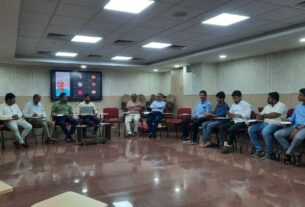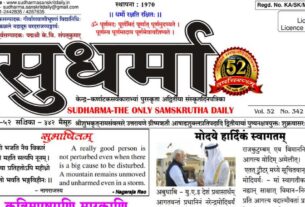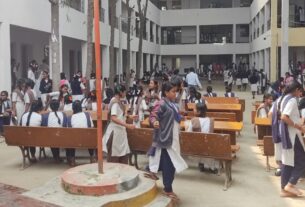Although there is no law that determines what children can or cannot read, children’s authors in India find themselves playing it safe.
Children’s authors in India sacrifice their freedom to express certain ideas so their books can be published, sold and accepted by parents, publishers and society.
“My book ‘Behind the Lie’ is about domestic violence. People think that such topics are dark, but what about people who live those lives and what about their children who witness it?” asked Asha Nehemiah, a children’s author who has been writing children’s books for 30 years. She added that children’s books go through a rigorous reviewing process before being published.
Publishers feel that a certain amount of responsibility falls on their shoulders when they agree to publish a particular book. “The publisher is like the ship that carries the authors and weathers the storms. A publisher needs to sense the pulse of the reader and own the commercial risk. It is about allowing that artistic freedom and expression but also about writing for children,” said Rajarejeshwari Nagasigamani , a children’s author, indie publishing consultant and Chairperson of ALL (All Ladies League) Karnataka Readers and Writers Chapter.
She added, “But as a children’s author, I tend to consciously avoid swear words and gravitate towards topics like nature and focus on themes like compassion, empathy and friendship.”
Parents have mixed views of how a children’s book must be. “Children below 10 are too young to hear about a topic like divorce. I feel like children should be exposed to topics like nature and an emphasis on keeping the environment clean,” said Ranjani, whose son is seven years old.
She also added that there are other heavy topics that children can be exposed to. She said, “Death is something that children should know about because it happens in every family. But divorce doesn’t happen in every family. Exposing the child to it is unnecessary mental trauma.”
Arundhati, a parent, said society should not police children’s literature and that authors should be allowed creative freedom. “To a certain extent, the parent should decide what their young child should read. And if my 10-year-old daughter must know about divorce and other heavy topics, so be it.”
Writers, however, do not like the idea of adults censoring what children read. Asha said, “I am against adults acting like gatekeepers. Shouldn’t children think independently? Children as young as 10 or 11 have phones today. Imagine the information, or rather, misinformation they are receiving.” She added that when her book about domestic violence was released, reading groups were initially skeptical, but children liked the book.
“I have my own phone and I know things and learn from so many sites. I know what divorce is, so what is wrong if I read a book on it?” said *Harshita, Arundhati’s daughter.
Authors feel that it is difficult for them to make a real impact with constant scrutiny from society. Asha said, “And another issue is the society’s bias. If I were to portray a dusky skinned character as poor, a certain person in society may have a problem with that. But that speaks more about their bias than anything else.”
In 2019, Karadi Tales published a book called ‘The Art of Tying a Pug’, authored by Natasha Sharma and illustrated by Priya Kuriyan. The book spoke about the tying of the Sikh turban ‘pugdi’ but called it a ‘pug’, which is a dog breed. After getting threats from the Sikh community for the alleged disrespect, the publishers withdrew the book.
Karadi Tales tweeted from their official twitter handle and said, “The book was intended to familiarize children with the process of tying the ‘pugdi’ (Sikh turban). We received effusive praise from all quarters including Sikhs for the book, since it presents the proud Sikh tradition of the pug and kesh to a larger audience, using humorous interplay with a ‘pug’ (the pet).”
Children’s authors do hold religious and political sensitivities as primary concerns while writing books said Rumana Hussain, a Karachi-based children’s author. She said, “I’ve written over 60 children’s books like ‘Lal Badam’ and ‘Karachi Wala — a subcontinent within a city’. I’ve never faced any protest, banning or censorship here.”
Educators feel that children should be exposed to sensitive topics and that authors should have the freedom to express. Educator Radhika Mitter said, “Although there is a way in which children’s authors must craft their stories in order to introduce a sensitive topic to children, there is no reason why authors must stay away from it. Authors should change the stereotypical themes and show reality. That is real education.”




